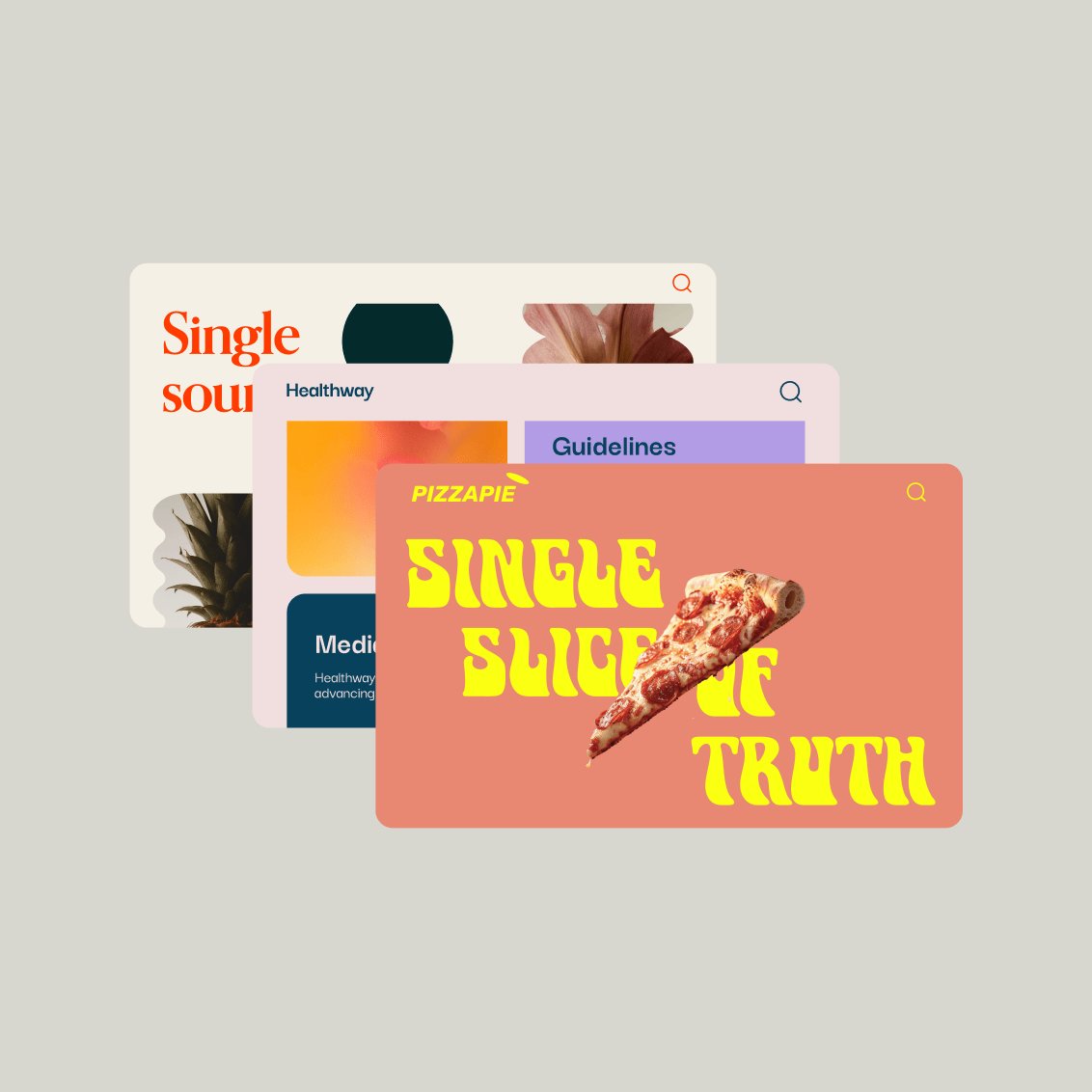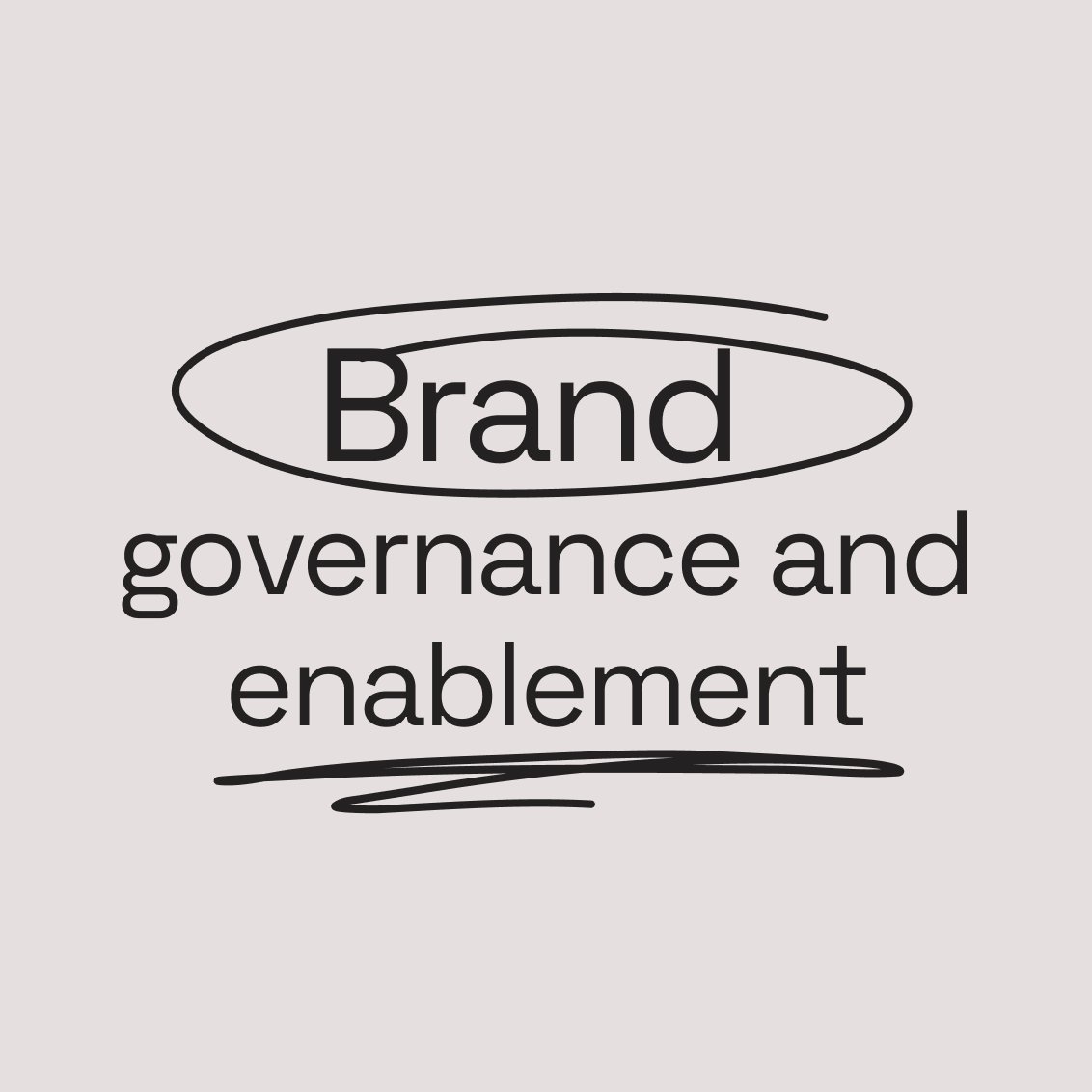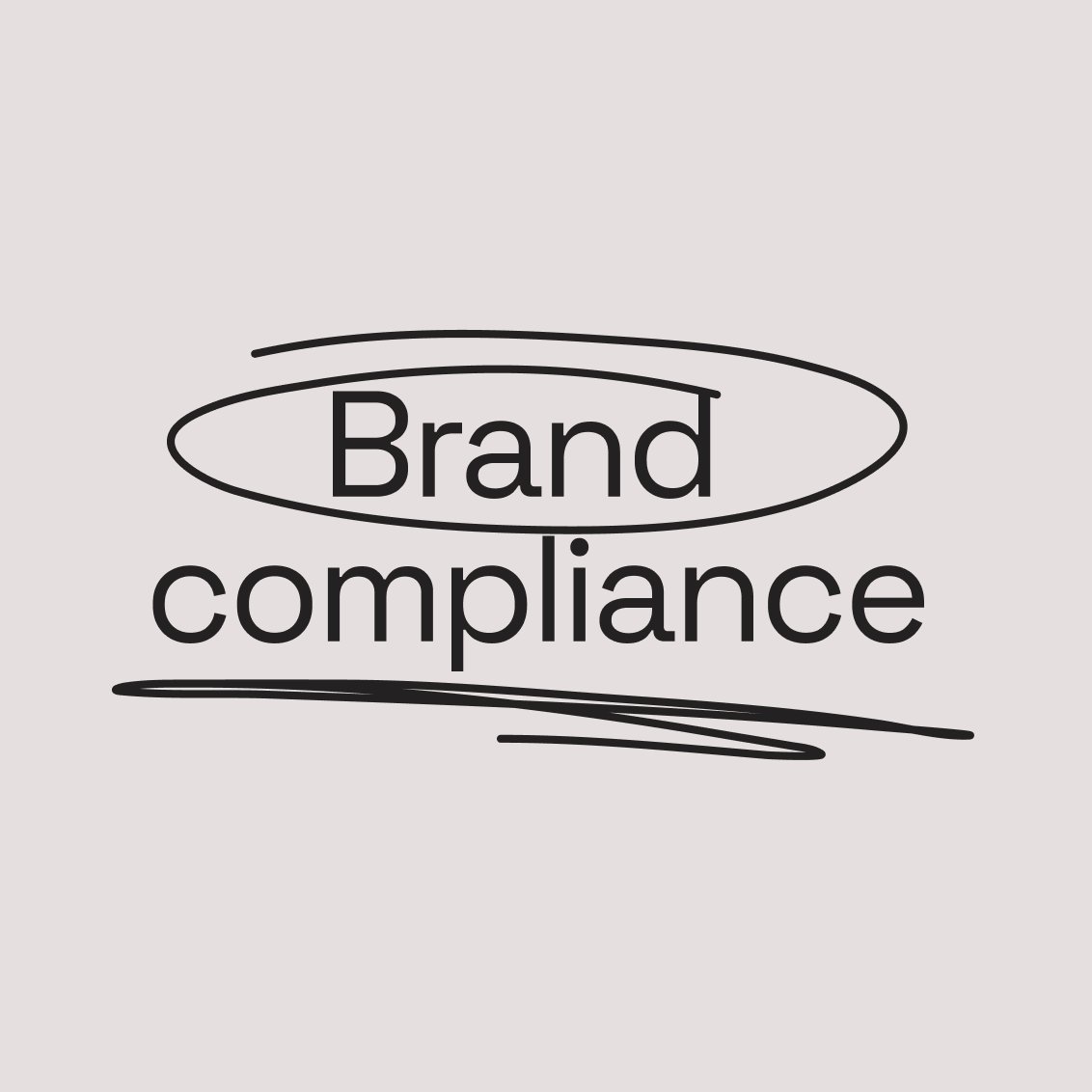It used to be pretty easy to “control” brand consistency before digital channels became the primary avenue for connecting with customers. Companies could hire a single brand manager to take control of their projects, and every customer-facing campaign, product, and communication received their approval before going out the door.
But in today’s world, that “top-down” approach to brand governance simply isn’t possible. Companies need to publish more content faster to keep their brand top of mind. And with more marketing channels than ever, the old brand governance approach is impossible to scale.
As workloads increase, brand managers either spend their days picking which campaigns they can ignore, or creating backlogs that affect the whole organization. Teams are left waiting in the queue or forced to take shortcuts to complete and publish their projects on time.
Companies need to make changes to the way they govern their brands. Here’s how you can take a modern approach to brand governance and management in your business.

What is brand governance?
Brand governance is the work done by an organization to control the presentation and use of its brand internally and in public spaces (both online and offline). Often, this includes creating and enforcing brand guidelines, digital asset management, building feedback and approval workflows, and providing employee training to ensure all initiatives correctly represent the brand identity.
Brand governance doesn’t just cover your brand’s visual identity. As well as working to improve visual consistency, it also looks at how the brand sounds, which includes messaging and tone of voice.
There are two main approaches to brand governance:
- The “iron fist” approach, where your brand manager acts as the sole guardian of your brand identity
- The “lean” approach, where the entire organization is responsible for developing and maintaining a consistent brand identity.
The “iron fist” approach
The “iron fist” approach was the traditional method of brand governance. It seemed like the best option: with one manager solely responsible for the brand, they’d know exactly how it should look and feel.
Unfortunately, it wasn’t as effective as most businesses thought because it didn’t eliminate “off-brand” collateral and campaigns. Teams still created “off-brand” content if they were using out-of-date brand guidelines and assets or didn’t have access to the guidelines to work from.
Then, they’d face delays waiting for the brand manager to review and correct their work before they could publish it. This approach created tensions between teams and left employees feeling disconnected from the brand — it felt more like an inconvenience than a core part of the business.
The “lean” approach
The “lean” approach is the modern style of brand governance where the brand team hands off brand guardianship and governance to other departments and team members. They provide education, resources, and training to help employees understand and implement the brand with less oversight from the “brand police”.
With this approach, teams can work on their own projects using the shared guidelines and assets. It enables everyone to work on brand projects asynchronously and increases brand advocacy within the organization. Employees and external partners feel more connected to the brand and more excited to share it with the outside world – both on and off the clock.
Brand managers can stop feeling like the “brand police” and instead spend more time answering questions, updating brand materials and guidelines, and holding regular brand workshops to strengthen brand knowledge. As a result, everyone feels closer to the brand, and better understands its value to the organization.
While the “lean” approach is often associated with small, hip startups, it also holds a lot of potential for larger, more established companies.

Why brand governance is essential for fast-growing brands
Effective brand governance helps you build a consistent brand and customer experience. It provides four main benefits.
Builds trust and a stronger brand identity
Brand governance makes it easier to develop a strong, recognizable identity for your brand. It helps your whole team be consistent in their use of visuals, messages, and how they communicate and express your brand values, so everything you publish is on-brand. This creates a consistent brand experience across all touchpoints, wherever customers interact with your brand. For example:
- Watching a brand advert on YouTube
- Reading an email from your marketing team
- Getting a post-sales notification
- Or contacting your customer support team.
Staying consistent in your visual style, messaging, communication, and values helps build trust in your brand through recognition. Trust helps strengthen your relationships with your best customers until they become brand ambassadors or champions.
Strengthens employees’ connection with the brand
A strong brand can be an effective employee retention tool. If employees feel connected to your brand, it gives them a sense of purpose that’s bigger than their individual job, so they’re working for more than just their paycheck.
The modern approach to governance makes it easier for employees in every department to engage with brand-related projects. It allows all employees to create and use brand assets, so it becomes part of their job. They can see how their work affects the brand and helps build its reputation.
By providing regular training and centralizing your brand assets, you give everyone access to the tools and templates they need to use the brand in their work, which helps them feel more closely connected to it. For example, since rolling out their centralized brand portal (including guidelines and DAM), Bosch has more than 15,000 people using their brand portal every month.
Increases internal brand ownership and accountability
Brand governance gives employees a shared sense of ownership for your brand — something they actively want. In our study of more than 750 brand, marketing, and design professionals, 69% of people said they wanted more ownership over the development and management of their brand.
Even better, internal brand ownership delivers real value to your business: Forrester found that “cultivating brand culture and encouraging adoption and use of the brand creates a lift of $473,200 over three years.”
Effective brand governance increases ownership and accountability by helping employees strengthen their understanding of the brand. They understand what it means to the company and its customers, and why it’s so important. Once they appreciate that brand building is more than just paying attention to logos and colors, they start to recognize the value a consistent brand brings to the business.
Reinforces brand reputation and recognition
Brand governance ensures all communications, visuals, and customer touchpoints align with your brand’s identity. Creative consistency across all touchpoints makes it easier for customers to identify and engage with your brand, helping to build long-lasting customer relationships.
Consistency boosts your brand’s reputation in the market: Marketing Week found that the top 20% of consistent brands are “more likely to generate awareness, differentiation, fame and attitude change.” And The Institute of Practitioners in Advertising found that the most consistent brands generate “more brand awareness, differentiation, brand values and salience” with their marketing campaigns.
Clear governance helps protect your brand’s credibility and market standing. It prevents common missteps that can weaken brand recognition, such as employees using old brand materials, outdated messaging, or unsuitable visuals, because everyone has access to the information and resources needed to use the correct ones.
5 steps to achieving brand governance excellence
Your brand governance strategy aims to empower teams across your organization to shape your brand. So you need to ensure you have the right digital solutions, processes, and resources available.
From a technology standpoint, you need solutions that allow you to standardize your organizational brand processes, increase efficiency, and keep everyone on the same page. Brand managers also need to set up clear processes for change management, create a proper training plan, and support team members as they adapt and learn to use the brand “correctly.”
Here’s how to achieve this.
1. Make your brand vision public
Your teams can’t help you build a recognizable, cohesive brand if they don’t know how it should look.
Start by sharing your brand guidelines with employees across your organization to help everyone understand your brand standards and creative vision. Make sure your brand guidelines cover visual brand elements (like logos, color palettes, and fonts) as well as tone of voice guidelines to improve consistency in written brand content.
This will help improve consistency across the organization. Sales and Customer Support teams will be better able to say the right things. Marketing and HR can convey the right messages in their campaigns and outreach. It will even help product managers and developers use the right tone when crafting UX copy and building customer-facing solutions.
2. Communicate brand changes
Brands are ever-evolving. Take Kia, for example. In 2021 they rolled out a major rebrand, and they needed to keep their employees up-to-date. A central brand platform and clear communication helped them do just that.
Even if you’re just making small brand changes, it’s important to keep everyone informed. This can mean the difference between a successful pivot and a bunch of off-beat campaigns.
The better your employees understand your brand, the better they are at keeping their projects aligned with it. So internal communication should be an essential part of your brand governance strategy. Brand communication can be as simple as sending out a brand newsletter to update employees when your guidelines change. You should also provide internal training to help employees understand brand guidelines and keep projects aligned with them.
Training should cover:
- How and when certain brand assets should be used
- How to find and download brand assets
- Where to access your brand guidelines and how to use them
- The best ways to collaborate on cross-functional projects
- How to submit projects for feedback and approval by the brand team
- How to request support from designers
- How managers should guide brand projects and correct mistakes within their departments
And this is true no matter how many hundreds of employees you have or what your work environment looks like. Regular communication and training will help your employees become knowledgeable, confident brand experts, well-equipped to build a memorable brand.
3. Develop a brand governance framework
A brand governance framework will give internal team members the top-level information they need to represent your brand correctly. It helps everyone in the company understand how their role contributes to building the brand and who can provide support and answers to any brand-related questions.
Develop your brand governance framework by:
- Mapping out people’s brand responsibilities, both at a departmental and individual level
- Setting out the processes that will help achieve brand compliance, such as approvals and feedback
- Sharing details of available training and resources to empower people to learn more about the brand
- Listing all the tools and technology they should use to create, use, and store branded assets. For example, brand guidelines, digital asset management tools, or creative templates.
Companies should develop a brand governance framework as a first step toward achieving brand governance excellence. Developing a framework forces you to think about your brand within the wider context of your company. Creating the framework will help you develop the processes and internal resources that will help you achieve and maintain brand compliance across all teams in the business.
Learn more: What should your company’s brand governance framework look like?
4. Use brand governance tools
Brand governance tools make it easier for everyone to access and use brand materials, giving them greater ownership over brand-related work. While technology isn’t the answer to all your brand compliance challenges, the right tools can make it easier to achieve.
Companies can use a range of tools to manage their brand, such as:
- Brand guidelines tools
- Digital asset management tools
- Platforms to manage file sharing and permissions
- Design tools
- Collaborative online workspace
Alternatively, you may find it easier to use an all-in-one brand management platform like Frontify. The main benefit of an all-in-one platform is that all your tools integrate with one another. This means you can access your brand guidelines and approved assets straight from your design tools, giving you one dedicated place for everything related to your brand.
5. Centralize your brand assets
When your employees need assets, they need them now. They can’t afford to wait hours or days for someone to send them the right logo or share approved images for certain campaigns. And you don’t have the bandwidth to respond to every request that lands in your inbox, anyway. If you do, you’ll never get to the projects that actually need your attention.
Unfortunately, if all of your brand assets are locked inside your desktop computer or stored in the marketing department’s shared drive folder, neither one of you has a choice. Instead, you should centralize your brand assets and store all your documents, logos, images, videos, and collateral in a shared online asset management system.
Not only does this streamline employee access to brand materials, it also improves information security for your organization. You can set up access controls to your brand guidelines and assets, to control who has access to what and for how long. This means you can control how different departments, as well as external partners and collaborators, access your brand materials, all within one shared central platform.
Scale a successful brand with Frontify
The right tools make it easier to achieve brand governance in your organization by giving you the technology and systems to support your brand governance team’s hard work.
Frontify has helped companies like Vodafone and Mercedes-Benz streamline and scale up their brand governance efforts by:
- Creating centralized, online brand guidelines that are always up-to-date for all users
- Organizing brand assets in a central digital asset management system, so everyone can find the materials they need
- Creating brand templates for commonly-used asset types like social media graphics or sales presentations, to improve brand consistency
- Controlling access and user permissions so the right people have access to the right brand materials.
Want to see how Frontify can help your organization with its brand governance efforts? Book a demo today.


